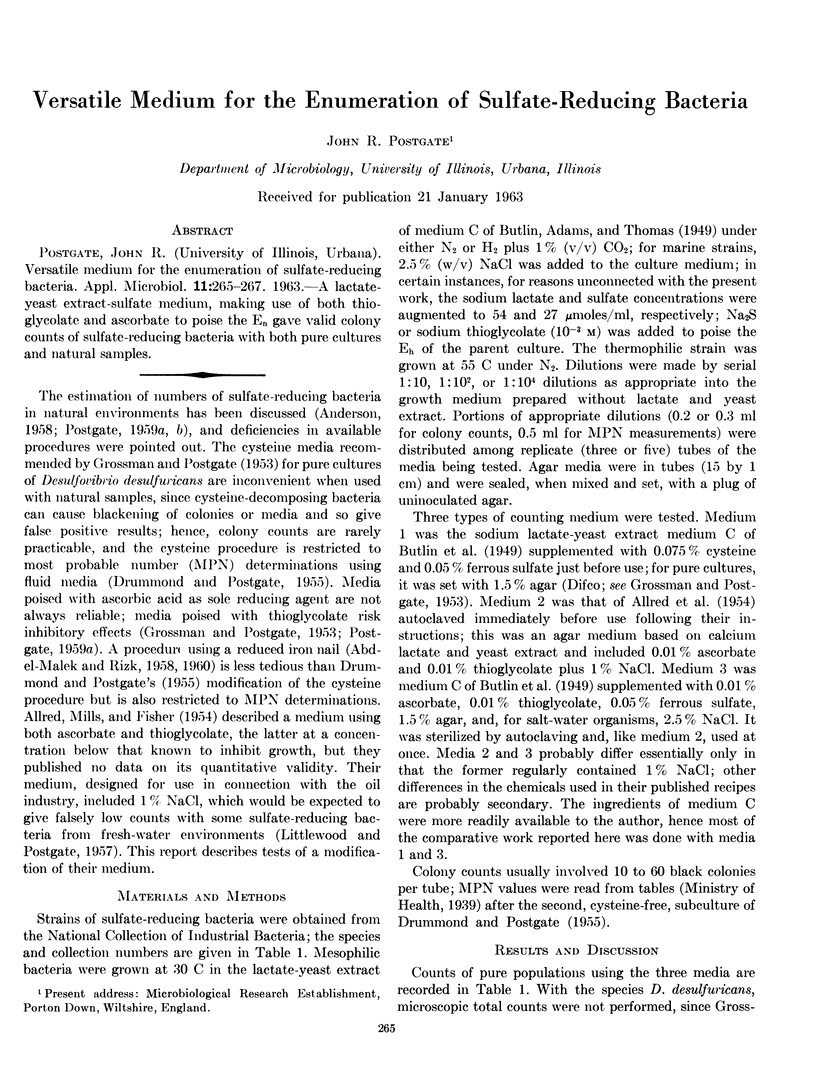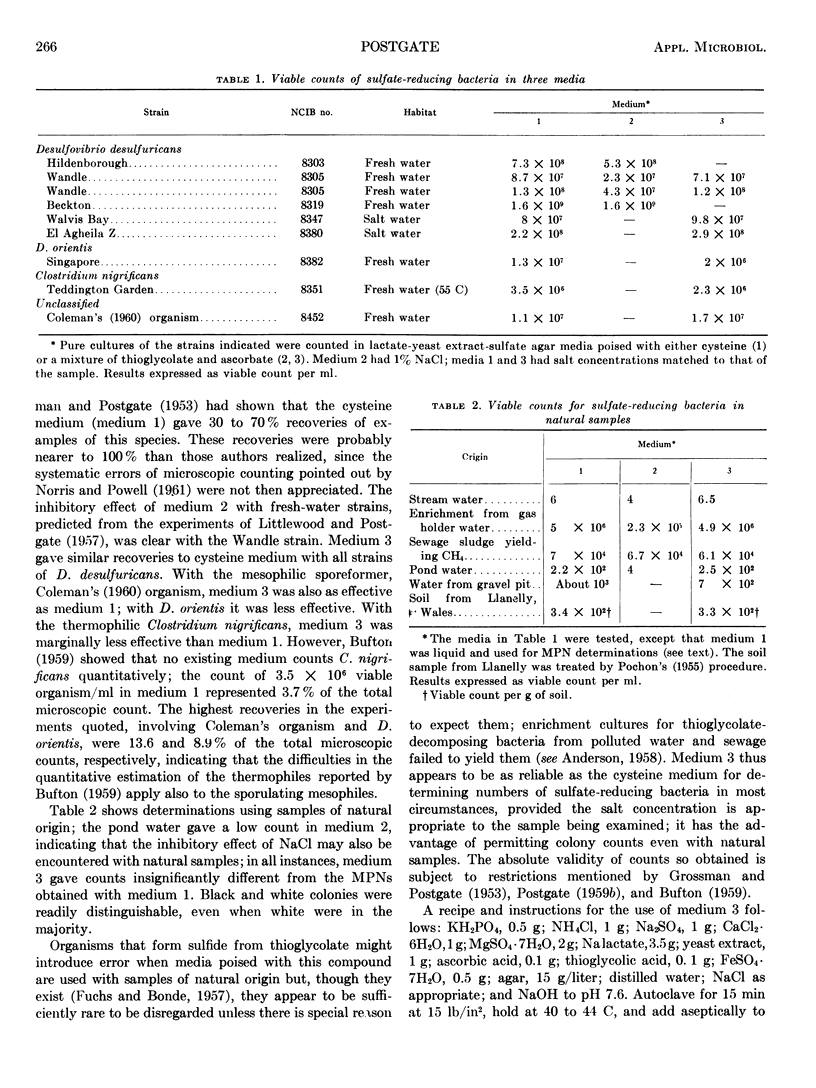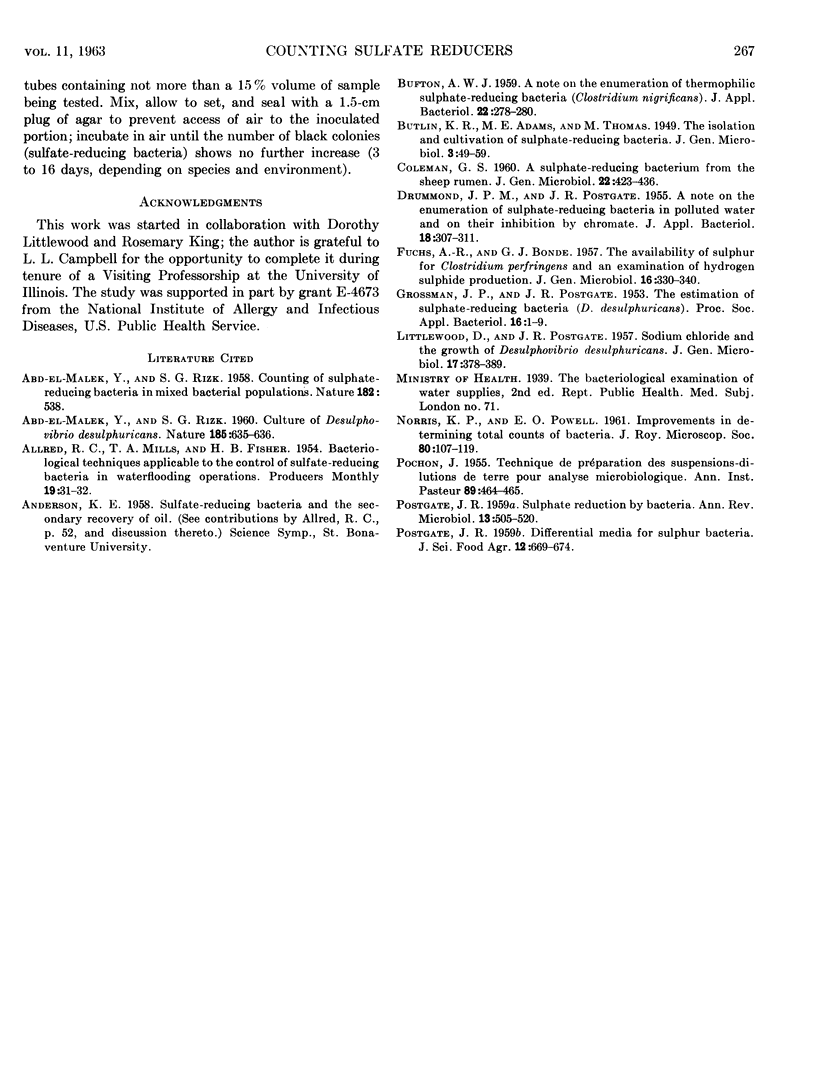Abstract
A lactate-yeast extract-sulfate medium, making use of both thioglycolate and ascorbate to poise the En gave valid colony counts of sulfate-reducing bacteria with both pure cultures and natural samples.
Full text
PDF


Selected References
These references are in PubMed. This may not be the complete list of references from this article.
- ABD-EL-MALEK Y., RIZK S. G. Culture of Desulphovibrio desulphuricans. Nature. 1960 Feb 27;185:635–636. doi: 10.1038/185635a0. [DOI] [PubMed] [Google Scholar]
- COLEMAN G. S. A sulphate-reducing bacterium from the sheep rumen. J Gen Microbiol. 1960 Apr;22:423–436. doi: 10.1099/00221287-22-2-423. [DOI] [PubMed] [Google Scholar]
- FUCHS A. R., BONDE G. J. The availability of sulphur for Clostridium perfringens and an examination of hydrogen sulphide production. J Gen Microbiol. 1957 Apr;16(2):330–340. doi: 10.1099/00221287-16-2-330. [DOI] [PubMed] [Google Scholar]
- LITTLEWOOD D., POSTGATE J. R. Sodium chloride and the growth of Desulphovibrio desuplphuricans. J Gen Microbiol. 1957 Oct;17(2):378–389. doi: 10.1099/00221287-17-2-378. [DOI] [PubMed] [Google Scholar]
- POCHON J. Technique de préparation des suspensions-dilutions de terre pour analyse microbiologique. Ann Inst Pasteur (Paris) 1955 Oct;89(4):464–465. [PubMed] [Google Scholar]


